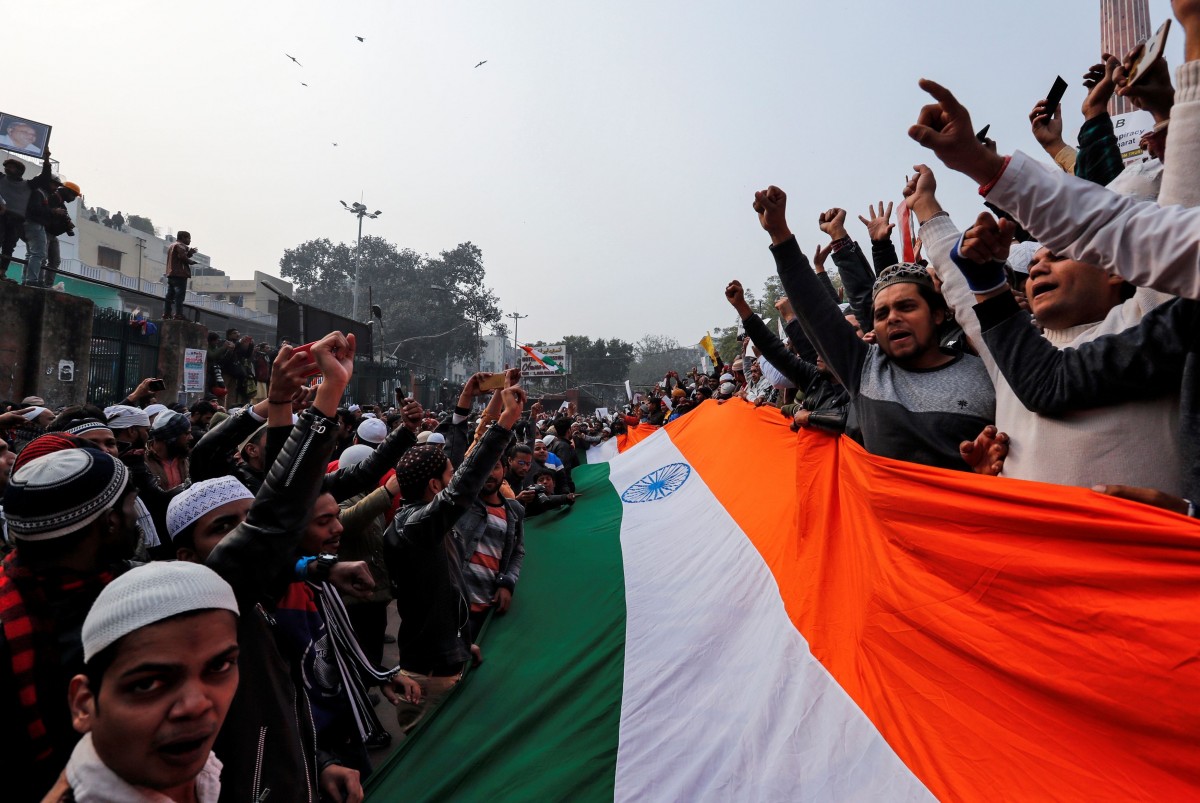
The death of Father Stan Swamy is a black day for the Indian judiciary, which was unable to even grant a basic right such as bail to a senior citizen with ailing health and there is also a case to be made that he was entirely innocent of the bogus charges against him. This hapless moment in history is not merely an outcome of the judiciary’s degeneration in competence and conscience, but is also attributable to India’s complex legal structure, which does little to protect individual liberty.
John Stuart Mill, in his classic essay ‘On Liberty‘, argues that the struggle between liberty and authority is one of the most conspicuous features of history. An individual’s liberty, according to him, is almost absolute and “the only purpose for which power can be rightfully exercised over any member of a civilised community, against his will, is to prevent harm to others”.
He explains that the phrase “harm to others” is to be looked at through the lens of utility, which is not the will of majority, whose tyranny he warns against, but rather “utility in the largest sense, grounded on the permanent interests of a man as a progressive being”. Thus, he asserts, restrictions on liberty must always be for the largest good of society as a whole in the long run.
Criminal law is essentially a restraint on individual liberty, and the powers of arrest granted to the state enable it to instantly reduce free citizens to caged beings, leaving them at its mercy. Therefore, it is necessary that it is exercised with caution and utmost vigilance, to ensure that the freedoms guaranteed under Part III of the constitution are not unduly trampled upon.
However, recent times have witnessed a series of arbitrary arrests, such as those of the Bhima Koregaon activists, actor Rhea Chakraborty and CAA protestors inter alia. The purpose of these arrests has been to satiate the community’s desire for vengeance, gain political brownie points, suppress dissenters and instil fear in the citizens against the state machinery, rather than promote the larger good and progress of our society, serving as a pungent reminder that Mill’s paradigm of liberty remains evergreen.
This trend, which has been aided by the misapplication of laws such as sedition, false cases manufactured by state agencies against law-abiding citizens as alleged by the lawyers of the Bhima Koregaon accused, or using trumped-up charges by substituting IPC offences with stringent UAPA provisions, is worrisome. The Indian criminal justice system, in spite of following the maxim “innocent until proven guilty”, is not designed to protect individual liberty, and once a citizen is entrapped in its clutches, getting out is an arduous process, irrespective of the guilt of the accused.
Wide powers of arrest
For starters, section 41 of the Code of Criminal Procedure (CrPC) provides the police with extremely wide powers of arrest, wherein they can arrest without a warrant if they have a reasonable suspicion that a person has committed an offence punishable with over seven years imprisonment.
In cases where the punishment is seven years or less, the powers of arrest are constrained by section 41A of the CrPC, which mandates that a notice of appearance be given to the accused, and the Arnesh Kumar guidelines of the Supreme Court, which require the police officer making an arrest to give a detailed justification for the same.
In order to bypass these requirements for arrest, a practice of applying aggravated charges, which exist for almost all the offences in the Indian Penal Code (IPC), has emerged. Theft turns into dacoity while simple forgery of a document is transformed into forgery of a valuable security, which attracts imprisonment up to life. Provisions like criminal conspiracy and common intention are routinely invoked to link innocent persons and those guilty of lesser offences with habitual offenders and hardened criminals, thereby facilitating easy arrest without the requisite justification. Moreover, these charges are usually questioned by the court at the stage of filing of chargesheet, and not during the investigation, which allows persons to remain in extended custody for up to 60-90 days.
Mechanical remands
While Article 22 of the constitution protects an arrested person by requiring them to be produced before a magistrate within 24 hours, more often than not, magistrates fail to apply their mind while passing remand orders. Section 167 of the CrPC empowers the magistrate to remand the accused into police custody for up to 15 days and up to 90 days in judicial custody. For instance, the judge passing the remand order in Father Swamy’s case was legally required to question the need to keep an ailing senior citizen in custody for prima facie baseless charges and when investigation could easily proceed without arrest.
The Supreme Court has repeatedly noted, be it in Arnesh Kumar or in Manubhai Ratilal Patel, that remand requires judicial discretion and cannot be a mechanical process. For this reason, in consonance with the recommendations of the 37th Law Commission Report, section 167 was amended to exclude executive magistrates from the purview of granting remand, as it specifically required the judicial application of mind.
Despite this, custody is mechanically extended, and it is the norm to remand the accused from police custody to judicial custody, even when there is no need for the custody of the accused. For instance, the horrific deaths of Jayaraj and Bennix in Thoothukudi, Tamil Nadu last year, could have been prevented had the magistrate sought to apply his mind and release them, rather than remand them to further custody. Not once did he question whether the aggravated charges against the accused were justified and whether there was a genuine need for further custody.
Bail is a privilege
Justice Krishna Iyer in State of Rajasthan vs Balchand aptly stated that “the rule is bail, not jail”. Bail is a sacrosanct right as it guarantees that a person is not punished before they are proven guilty. Thus, it is one of the bastions of liberty in our criminal justice system.
However, courts are not inclined to grant bail under sections 437 and 439 of the CrPC during police custody, which has a 15-day upper limit under section 167, as they remain apprehensive of interfering with the investigation. This allows the police to get away with citing frivolous and far-fetched reasons to extend police custody and deny the accused their right to bail.
As per practice, bail applications are usually heard only when the accused is remanded to judicial custody. Here too, a myriad of issues arise. When judges don’t sit or don’t give dates, or public prosecutors unnecessarily delay their replies, an accused’s right to bail is automatically precluded. In politically sensitive cases, one notices a greater abdication of responsibility by the subordinate judiciary. They prefer their orders to be appealed against rather than being the ones to directly interfere in cases of mala fide exercise of power by the State.
The majority of under trials hail from underprivileged backgrounds and lack proficient legal representation, a sine qua non for bail. This is further complicated when special laws with aggravated punishments like the UAPA and MCOCA are routinely invoked for IPC offences, causing bail to become more elusive. Draconian provisions like section 43D(5) of the UAPA permit the judge to reject the bail if they believe the accused is prima facie guilty. All this has reduced bail to a privilege for the special few, rather than a right.
Custodial horrors
Complicated procedures which pay lip service to liberty, enable a system where custody is the norm. Around 70% of India’s prisoners are undertrials. With India refusing to ratify the Convention against Torture, approximately five persons dying in custody every day over the last decade and only 26 police officers being convicted in custodial deaths between 2001 to 2018, custody serves as a safe space for police excesses.
Recently, a youngster in Haryana died soon after he was released from custody. Before his death, he informed his family that he was physically tortured by the police and was silenced before the magistrate with the threat that his family would be next if he disclosed the truth. Jayaraj and Bennix, who probably could have survived with timely medical intervention, also succumbed to their wounds while they were in custody.
Liberty a farce?
All this indicates that India’s complex procedures and their slow implementation ensure that one need not be proven guilty to be punished. Rather than procedure being the handmaid of justice, it is itself punitive, striking at the heart of liberty. Justice Chandrachud’s ode to liberty in Arnab Goswami’s case, wherein he aptly states that “deprivation of liberty even for a single day is one day too many”, can bring tears to the eyes and hope in the heart, but to the common undertrial, these words remain a distant fantasy.
The recently constituted Committee for Reforms in Criminal Laws has a challenging mandate before it and would do well to address the vital question of liberty, particularly of the innocent, whose valuable time and freedom lost can never be recompensed. Until then, there will be martyrs like Father Stan Swamy, who was sacrificed at the altar of judicial abdication. However, his defiant spirit remains timeless. In the event of his unjust incarceration, he courageously retorted, “But we will still sing in chorus. A caged bird can still sing.” Let us never forget, it was not our judiciary, but death, that won him his freedom. South Asia Wire


